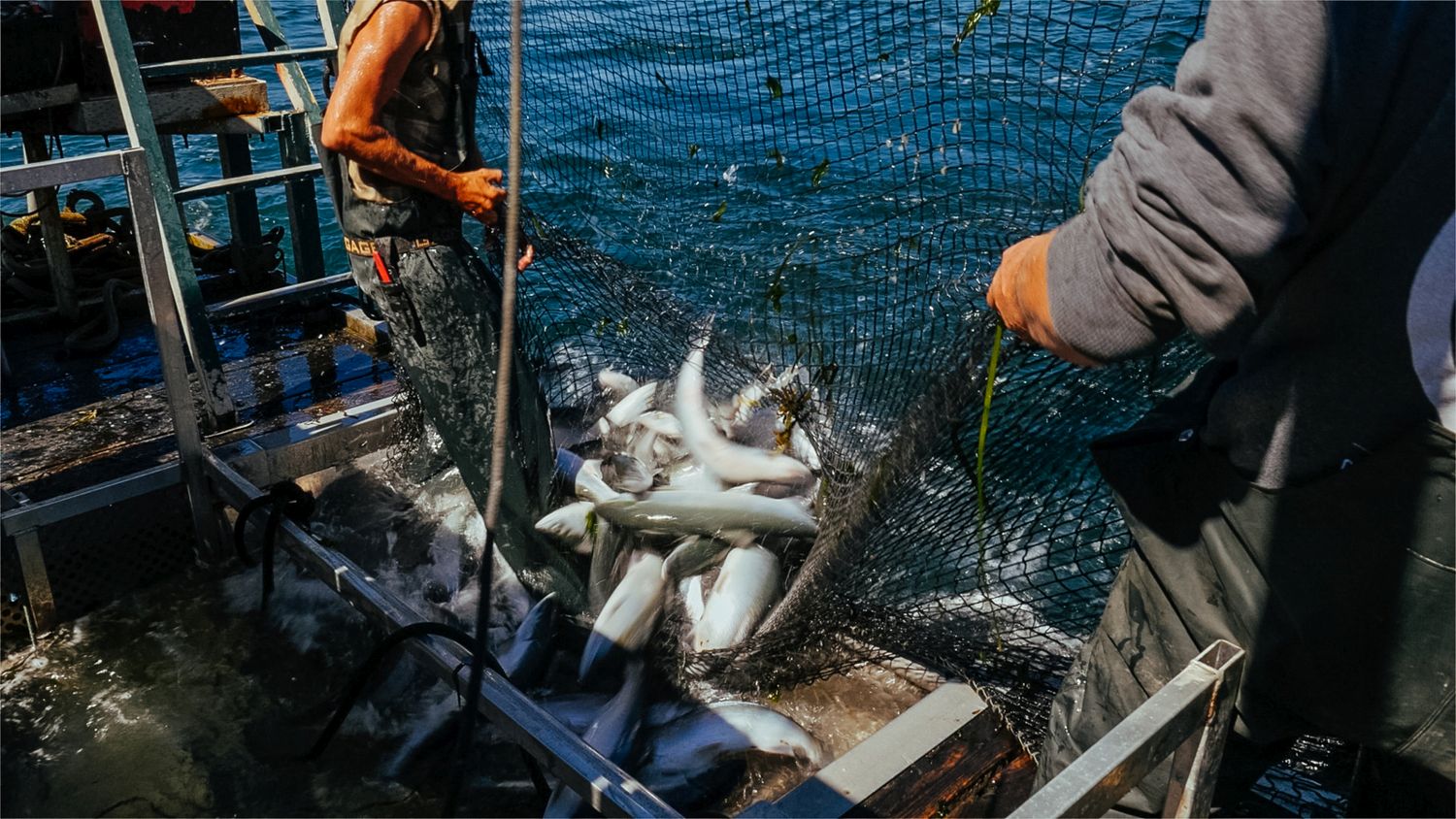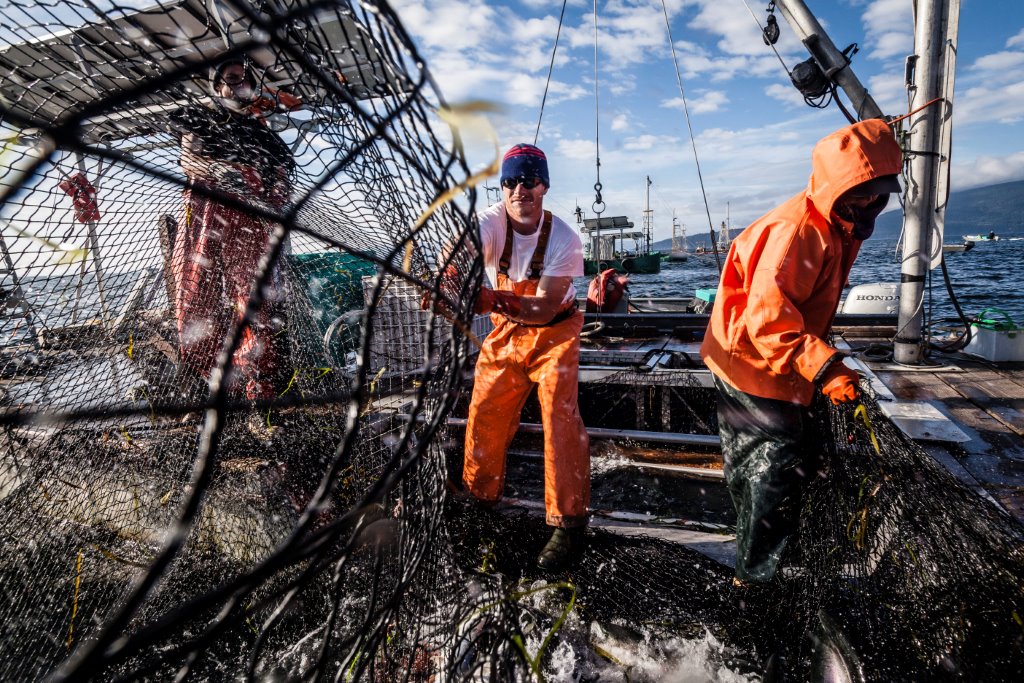Producer


Lummi Island Wild Coop
Contact: Ian Kirouac
Address: 3131 Mercer Ave. Suite 105 Bellingham, WA, 98225
County: Whatcom
Phone: 360-366-8786
Website: www.lummiislandwild.com
About Us
WILD SALMON AND OUR STORY
Thanks for joining us on our mission to catch and source only truly sustainable wild salmon and seafood from the Salish Sea and Alaska. We offer access to the highest quality seafood available. Together we will eat and live well and assure that quality seafood is around for many generations to come.
The Huffington Post says: “We are fully convinced that [Lummi Island’s] sustainable approach casts a wide net of benefits: tastier, more nutritious foods, a connectivity with the sea, a connectivity between harvesters, chefs, and diners, and the ability to preserve the experience for generations to come.”
WHAT SETS OUR SALMON APART?
Flavor in salmon is directly related to how much fat it has. When a salmon leaves the ocean to return to its natal stream, it stops eating and must rely on stored fat for the remainder of its life as it makes its journey home. The farther the salmon must travel to spawn, and the mightier its river of origin, the more fat it will have genetically developed and stored so it can make its most important life sustaining journey home.
Food & Wine says: “The long tradition of the Lummi Tribe’s reefnet fishing, combined with the dogged commitment to quality and sustainability of two longtime local fisherman, brings the best of the seafood from this Canada-adjacent island.”
THE FATTEST, MOST FLAVORFUL SOCKEYE IN THE WORLD!
The Fraser River has hundreds of tributaries where salmon spawn, some over a thousand miles from the Straits of Juan de Fuca, where the fish stop eating. It is a journey through some of the most turbulent and difficult waters of any Alaskan, Canadian or Northwest river system. In comparison, the Copper River in Cordova, Alaska is about 350 miles long. A salmon there needs only a third of the fat required by a Fraser River salmon. Nature prepares these amazing fish for a journey home that is second to none in requirements for stored energy. We harvest our Fraser River salmon long before they enter the river, so they still have all their stored energy in the form of omega 3 rich fat. This gives our fish the texture, flavor and the health benefit that few other salmon can offer.
“Carefully caught in solar-powered reef nets off Lummi Island and handled with kid gloves, these shimmering beauties are showing up on the menus of locavore restaurants,” Pacific NW Magazine of Lummi Island Wild’s salmon.
ETHICALLY SOUND METHODS AND ZERO DAMAGE TO THE ECOSYSTEM
Lummi Island Wild remains one of the ten most sustainable fisheries in the world
"Reefnets stand out as the original and still the best in selective fishing." – WASHINGTON STATE DEPARTMENT OF FISH & WILDLIFE.
SOLAR POWERED
In 2007 we began the process of fitting our reefnet fleet with solar power, making Lummi Island Wild the first solar powered wild salmon fishery in the world! This, combined with the fact that our gears stay in the very same spot year after year, allows reefnetting to have the lowest carbon footprint of any salmon fishery in the Salish Sea.
ULTRA LOW BYCATCH
Reefnetting has almost zero bycatch mortality. No other fishery approaches such a sustainable level. We have been awarded the highest rating from Monterey Bay Aquarium’s Seafood Watch. After a successful catch, reefnet salmon are gently rolled into a live well, having been out of the water for only seconds. This gives us an extremely high success rate for releasing non-targeted species unharmed. The reward, in this case, is seeing them swim away and knowing that they will survive to complete their age-old cycle of returning to their spawning grounds to ensure their species’ future.
…it’s the most eco-friendly way to fish. All by-catch is released by hand and it yields far superior tasting fish. – SUNSET MAGAZINE
Thanks for joining us on our mission to catch and source only truly sustainable wild salmon and seafood from the Salish Sea and Alaska. We offer access to the highest quality seafood available. Together we will eat and live well and assure that quality seafood is around for many generations to come.
The Huffington Post says: “We are fully convinced that [Lummi Island’s] sustainable approach casts a wide net of benefits: tastier, more nutritious foods, a connectivity with the sea, a connectivity between harvesters, chefs, and diners, and the ability to preserve the experience for generations to come.”
WHAT SETS OUR SALMON APART?
Flavor in salmon is directly related to how much fat it has. When a salmon leaves the ocean to return to its natal stream, it stops eating and must rely on stored fat for the remainder of its life as it makes its journey home. The farther the salmon must travel to spawn, and the mightier its river of origin, the more fat it will have genetically developed and stored so it can make its most important life sustaining journey home.
Food & Wine says: “The long tradition of the Lummi Tribe’s reefnet fishing, combined with the dogged commitment to quality and sustainability of two longtime local fisherman, brings the best of the seafood from this Canada-adjacent island.”
THE FATTEST, MOST FLAVORFUL SOCKEYE IN THE WORLD!
The Fraser River has hundreds of tributaries where salmon spawn, some over a thousand miles from the Straits of Juan de Fuca, where the fish stop eating. It is a journey through some of the most turbulent and difficult waters of any Alaskan, Canadian or Northwest river system. In comparison, the Copper River in Cordova, Alaska is about 350 miles long. A salmon there needs only a third of the fat required by a Fraser River salmon. Nature prepares these amazing fish for a journey home that is second to none in requirements for stored energy. We harvest our Fraser River salmon long before they enter the river, so they still have all their stored energy in the form of omega 3 rich fat. This gives our fish the texture, flavor and the health benefit that few other salmon can offer.
“Carefully caught in solar-powered reef nets off Lummi Island and handled with kid gloves, these shimmering beauties are showing up on the menus of locavore restaurants,” Pacific NW Magazine of Lummi Island Wild’s salmon.
ETHICALLY SOUND METHODS AND ZERO DAMAGE TO THE ECOSYSTEM
Lummi Island Wild remains one of the ten most sustainable fisheries in the world
"Reefnets stand out as the original and still the best in selective fishing." – WASHINGTON STATE DEPARTMENT OF FISH & WILDLIFE.
SOLAR POWERED
In 2007 we began the process of fitting our reefnet fleet with solar power, making Lummi Island Wild the first solar powered wild salmon fishery in the world! This, combined with the fact that our gears stay in the very same spot year after year, allows reefnetting to have the lowest carbon footprint of any salmon fishery in the Salish Sea.
ULTRA LOW BYCATCH
Reefnetting has almost zero bycatch mortality. No other fishery approaches such a sustainable level. We have been awarded the highest rating from Monterey Bay Aquarium’s Seafood Watch. After a successful catch, reefnet salmon are gently rolled into a live well, having been out of the water for only seconds. This gives us an extremely high success rate for releasing non-targeted species unharmed. The reward, in this case, is seeing them swim away and knowing that they will survive to complete their age-old cycle of returning to their spawning grounds to ensure their species’ future.
…it’s the most eco-friendly way to fish. All by-catch is released by hand and it yields far superior tasting fish. – SUNSET MAGAZINE
